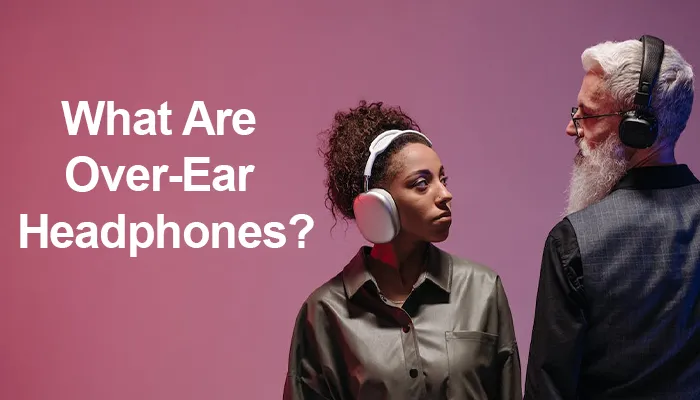As an audiophile, high-quality sound is essential for an immersive listening experience. Over-ear headphones, also known as around-ear headphones, are an excellent choice for any music lover looking to upgrade from standard earbuds. With large, cushioned ear cups that completely encompass your ears, over-ear headphones provide superior noise isolation and comfort for extended listening sessions.
The over-ear design and size also allow for high-performance audio components that produce a wider frequency range and more detailed, accurate sound reproduction. Whether you prefer the deep bass of hip hop, intricate layers of jazz, or soaring highs of classical music, over-ear headphones can transform your favorite audio into a personal concert. With a variety of price points and options on the market, you can find an ideal pair of over-ear headphones suited to your needs and budget.
So if you’re ready to rediscover your music library and redefine your listening experience, over-ear headphones are the perfect place to start. Immerse yourself in rich, nuanced sound and get lost in the rhythm. The world of high-fidelity audio awaits you.
What Are Over-Ear Headphones?
Over-ear headphones, also known as around-ear headphones, are headphones that have padded cups that fully enclose your ears. They are larger than on-ear headphones and in-ear buds. Over-ear headphones provide an immersive listening experience by blocking out ambient noise.
Over-ear headphones are comfortable for long listening sessions since they disperse pressure over the entire ear. They tend to produce high-quality, well-balanced sound with impactful bass. Popular brands of over-ear headphones include Bose, Sony, Sennheiser, Audio-Technica, and Beats by Dre.
Over-ear headphones may be wired, wireless or noise-canceling. Wired over-ear headphones transmit audio signals through a cable. Wireless over-ear headphones use Bluetooth to stream audio from a device. Noise-canceling over-ear headphones employ tiny microphones and electronic circuitry to block ambient noise for an ultra-quiet listening experience.
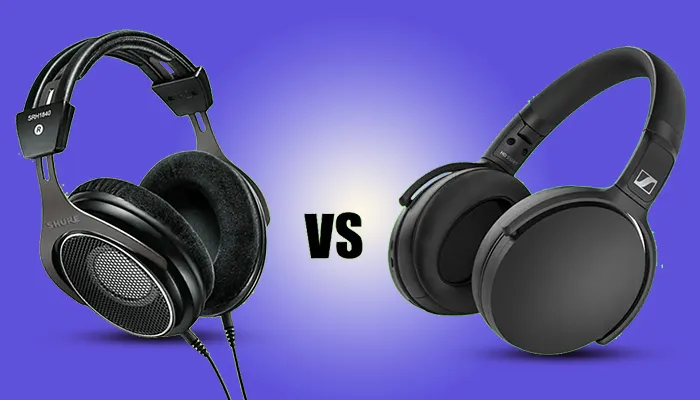
Types of Over-Ear Headphones
Over-ear headphones come in two main types: closed-back and open-back. The type you choose depends on how you intend to use them and the listening experience you prefer.
Closed-Back Headphones
Closed-back headphones have sealed ear cups that block outside noise. This isolation provides an immersive listening experience and prevents sound from leaking out. Closed-back headphones are ideal if you want to listen in noisy environments or don’t want to disturb others.
However, some people find that the sealed design can make the audio seem unnatural or can cause discomfort over long listening periods.
Popular closed-back Headphones include:
- Audio-Technica ATH-M50X
- Beyerdynamic DT 770 PRO
- Focal Stellia
- Blue Ella Planar Magnetic Headphones
- AKG Pro Audio K92
Open-Back Headphones
Open-back headphones have perforated or mesh-covered ear cups that allow outside noise to pass through. This open design provides a more natural, expansive sound quality that many audiophiles prefer.
However, open-back headphones also allow sound to escape and do not block ambient noise. They are best suited for quiet, isolated environments.
Popular open-back over ear headphones:
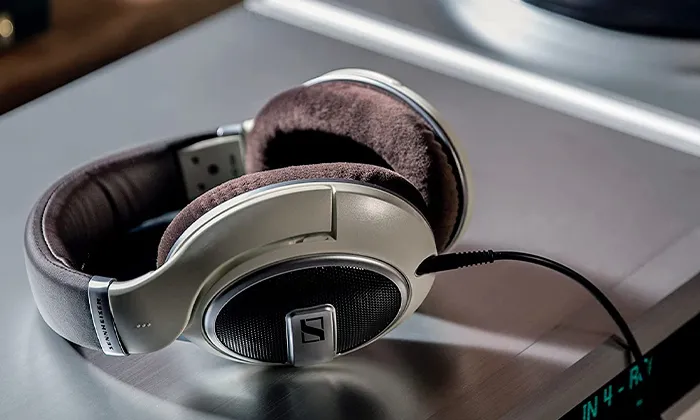
Benefits of Using Over-Ear Headphones
Over-ear headphones, also known as around-ear or circumaural headphones, offer several advantages over other types of headphones.
Superior Sound Quality
Over-ear headphones typically provide better sound quality than smaller on-ear or in-ear models. Their larger drivers and ear cups help create a wider frequency range and soundstage, allowing you to hear more details in your audio. The seal around your ears also blocks out ambient noise for an immersive listening experience.
Comfort
Over-ear headphones are designed to comfortably fit around your ears without applying pressure to them. Their padded ear cups and headbands prevent discomfort over long listening sessions. They are ideal for people who find on-ear or in-ear headphones irritating to wear.
Noise Isolation
The over-ear design effectively blocks out ambient noise and prevents sound from leaking in or out. This makes them suitable for use in shared spaces or loud environments. The noise isolation also allows you to listen at lower, safer volume levels.
Durability
Over-ear headphones are typically quite durable, built to withstand regular use and the occasional drop. Their sturdy yet padded design protects the headphone components and your ears. With proper care and maintenance, a high-quality pair of over-ear headphones can last for many years.
Compatibility
Most over-ear headphones come with either a 3.5mm connector or Bluetooth wireless connectivity. The 3.5mm connector allows you to use the headphones with nearly any audio device that has a headphone jack. Bluetooth versions provide greater flexibility and portability with compatible devices.
Over-ear headphones may be bulkier and less portable than other options, but for sound quality, comfort, and durability, they are hard to beat. With the benefits they provide, over-ear headphones are an excellent choice for any music lover or audio enthusiast.

Features to Look for When Buying Over-Ear Headphones
When shopping for over-ear headphones, there are several key features to consider based on your needs and preferences.
Sound Quality
The sound quality depends on many factors, including the headphone drivers, frequency response, and noise cancelation capabilities. Larger drivers, like 40mm or 50mm, typically provide better bass response.
A wide, balanced frequency range of 20Hz to 20kHz ensures you’ll hear all the details in your audio. Active noise cancelation uses tiny microphones to pick up ambient noise and produce inverse sound waves to block it out, which is ideal for travel or noisy environments.
Comfort
Over-ear headphones fully encompass your ears, so comfort is essential. Look for padded ear cups that fit over your ears without pinching, breathable and lightweight materials, and an adjustable padded headband.
Memory foam ear pads mold to the shape of your ears for maximum comfort. The clamping force should be snug enough to stay on your head securely but not too tight.
Wired or Wireless
Wired over-ear headphones provide lossless audio quality without worrying about battery life or Bluetooth connectivity. However, wireless over-ear headphones give you more freedom of movement without cables and often have a rechargeable battery that lasts 12-40 hours per charge. Bluetooth wireless range is usually 30 feet or more, depending on Bluetooth version.
Additional Features
Some over-ear headphones offer additional features like built-in microphones for calls, voice assistants, or gaming. They may have controls for playback, volume, noise cancelation, and voice assistants on the ear cups or cable. High-end models could include advanced features like personalized sound profiles, touch or swipe controls, and special gaming modes.
Considering these key features will help you determine which over-ear headphones match your needs and budget. Do some research on highly-rated brands and models, then look for the combination of sound quality, comfort, connectivity, and added features that suit you best.
With the right pair of over-ear headphones, you’ll be able to enjoy your audio and multimedia experiences to the fullest.
Best Brands for Over-Ear Headphones
When purchasing over-ear headphones, it pays to invest in high-quality models from reputable brands. Below are some of the best brands currently producing over-ear headphones:
Sony
Sony is one of the leading brands for over-ear headphones, especially for wireless and noise-canceling models. The Sony WH-1000XM5 are widely considered the best over-ear headphones overall, with top-notch sound quality, active noise cancellation, battery life, and features.
Sennheiser
Sennheiser is another well-known brand for over-ear headphones, with a long history of producing high-quality audio products. The Sennheiser Accentum are the best value over-ear headphones, offering great sound, noise-canceling, and battery life at a mid-range price point. The Sennheiser HD 560S are also a good option for open-back headphones that deliver a natural and spacious sound.
Bose
Bose is famous for its noise-canceling technology and comfort. The Bose QuietComfort Ultra Headphones are the best over-ear headphones for active noise cancellation, with a new design that blocks out more ambient sounds than ever before. They also have immersive audio and improved battery life.
Focal
Focal is a French brand that specializes in high-end over-ear headphones. The Focal Clear MG and the Focal Stellia are two of the best premium over-ear headphones, with luxurious designs, warm sounds, and excellent details. They are very expensive, but they offer a superb listening experience.
Anker
Anker is a brand that offers affordable over-ear headphones with decent performance. The Anker Soundcore Life Q30 are the best over-ear headphones under $99, with a clear and natural sound, a lightweight design, and a self-adjusting headband. They also have active noise cancellation and a long battery life
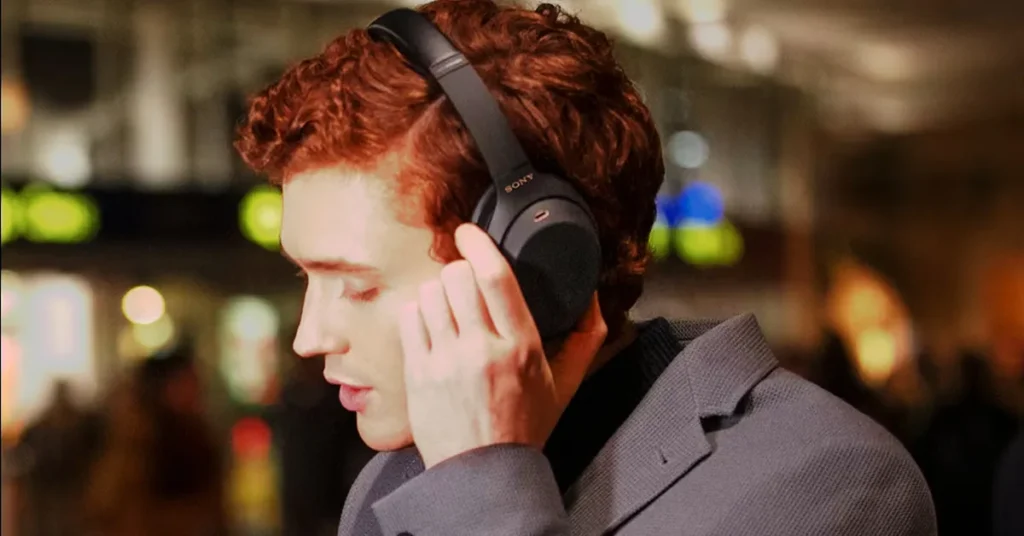
How to Properly Wear Your Over-Ear Headphones
To properly wear your over-ear headphones, follow these steps:
Make sure your headphones fit snugly but comfortably over your ears. The ear cups should completely encircle your ears without pressing too firmly against them. Ill-fitting headphones will negatively impact sound quality and can cause discomfort over long listening sessions.
Adjust the headband so that it sits evenly over the top of your head. The headband should not pinch or dig into your scalp. Look for adjustable sliding mechanisms on the sides of the headband to raise or lower each ear cup independently for the best fit.
Ensure the ear cups seal well around your ears. Look for headphones with padding around the edges of each ear cup, as this helps block out ambient noise and provides the best listening experience. Well-sealed ear cups also prevent sound from leaking out and disturbing others.
Consider your hairstyle. Headphones may fit differently depending on whether you have short or long hair. Make small adjustments to the headband and ear cups to accommodate your particular hairstyle. Those with longer hairstyles may need to wear their hair up or pulled back for the best seal and most comfortable fit.
Check that all wiring, including the cable connecting the two ear cups, sits comfortably without pulling. Route the main cable behind your head or under one arm for the least amount of restriction and tangling. Consider wireless or Bluetooth headphones if excess wiring is bothersome.
Ensure a secure and stable fit for the best audio experience. Over-ear headphones that shift, slide or fall off easily will degrade sound quality and become an annoyance during longer listening sessions. Look for adjustable mechanisms, well-padded ear cups and a sturdy yet flexible headband for the most stable and dependable fit.
With some minor adjustments, you can achieve an ideal fit and experience premium sound quality with a comfortable set of over-ear headphones. Take the time to adjust and optimize the fit of your headphones for the best possible listening experience.
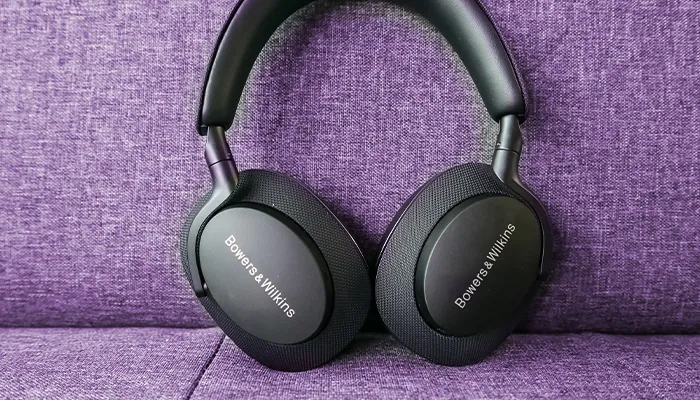
Caring for Your Over-Ear Headphones
To keep your over-ear headphones in good working condition and ensure optimal performance, proper care and maintenance are essential.
When storing your headphones, keep them in a dedicated case or sleeve to prevent damage. Avoid just throwing them in your bag or leaving them strewn about. Protect them from environmental factors like dust, dirt, and moisture.
Wipe down the ear pads and headband regularly with a damp, soft cloth to remove oils, sweat, and grime buildup. For stubborn stains, you can use a mild solvent like isopropyl alcohol. Let all parts air dry completely before next use. Disinfecting wipes can also be used for sanitation purposes.
Check the wiring and connections for any frays, tears, or exposed cabling and repair or replace as needed. Fraying and exposed wiring poses risks of electric shock and fire hazard.
Do not leave your headphones in direct sunlight or extreme heat for prolonged periods. High temperatures can cause damage to headphones by melting components or warping the headband and ear pads.
Replacing Ear Pads and Other Parts
Ear pads naturally break down over time and with frequent use. Replace ear pads once they start to flatten, crack, or no longer provide a good seal. Most over-ear headphones allow you to remove and replace the ear pads. Check with the manufacturer for compatible replacement ear pads.
Other parts like audio jacks, headbands, wiring, and drivers can often be replaced as well through the manufacturer or an authorized parts supplier. Performing repairs yourself can void warranties, so it is best left to professionals.
By properly caring for your over-ear headphones through regular cleaning, storage, and necessary repairs or part replacements, you can keep them functioning optimally for years to come. With some basic maintenance, your headphones can provide high quality audio for long term enjoyment.
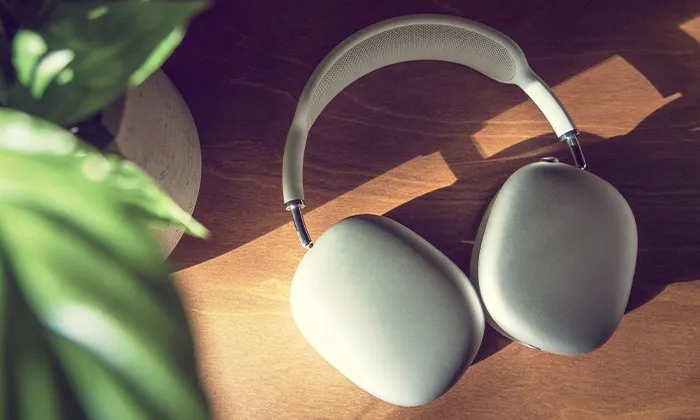
Top 5 Myths About Over-Ear Headphones
Over-ear headphones, also known as around-ear headphones, have been around for decades and continue to be popular for listening to music or other audio privately. However, some common myths about over-ear headphones persist. Let’s debunk some of the top myths.
Myth 1: Over-ear headphones are bulky and uncomfortable.
While early models of over-ear headphones were quite large and heavy, modern over-ear headphones emphasize comfort and ergonomics. High-quality over-ear headphones are crafted with plush, padded ear cups, adjustable and padded headbands, and lightweight yet durable materials. Many people find over-ear headphones extremely comfortable for long listening sessions.
Myth 2: Over-ear headphones are only for home use.
Though over-ear headphones may not be as portable as earbuds, many models are collapsible or foldable, allowing you to toss them in your bag to use on-the-go. Some over-ear headphones also include a carrying case for travel. With the right model, over-ear headphones can absolutely be used outside the home.
Myth 3: Over-ear headphones are expensive.
While high-end, audiophile over-ear headphones can cost $500-$1000 or more, there are many affordable options under $100 that provide very good sound quality. You can find basic but decent wired over-ear headphones for under $50. For those on a budget, over-ear headphones are still an accessible choice.
Myth 4: Over-ear headphones isolate too much outside noise.
It is true that over-ear headphones, especially models with active noise cancelation (ANC), can isolate you from outside sounds. However, many over-ear headphones allow a degree of ambient noise to pass through so you remain aware of your surroundings. You can also disable the ANC feature when needed. Over-ear headphones give you more control over how much outside noise you want to block.
Myth 5: Wireless over-ear headphones have poor battery life.
While early Bluetooth over-ear headphones struggled with short battery lives, modern wireless over-ear headphones can provide 15-30+ hours of playback per charge depending on the model. For most people, that is plenty of juice for wireless listening on-the-go. Battery life is no longer a significant downside of Bluetooth over-ear headphones.
FAQs
Conclusion
With all the options for over-ear headphones available today, it’s worth taking the time to find a pair that suits your needs and budget. High-quality over-ear headphones can provide an immersive listening experience for music, movies, gaming, and more.
Whether you want a lightweight, portable pair for on-the-go use or a high-end set for critical listening at home, you now have all the information you need to make an informed choice. With comfort, sound quality, connectivity, and style in mind, you can find the perfect over-ear headphones for your lifestyle. So take your time, compare the options, read reviews from other customers, and make a selection you’ll enjoy for years to come. The world of audio is at your fingertips.
- Charging Bluetooth Headphones During Use: Is It Possible? - January 9, 2024
- Why Over-Ear Headphones Best for Hearing Health? (7 Reasons) - December 12, 2023
- Fixing the Bose Earbuds Not Charging in Case Problem: Solutions That Work - November 24, 2023
